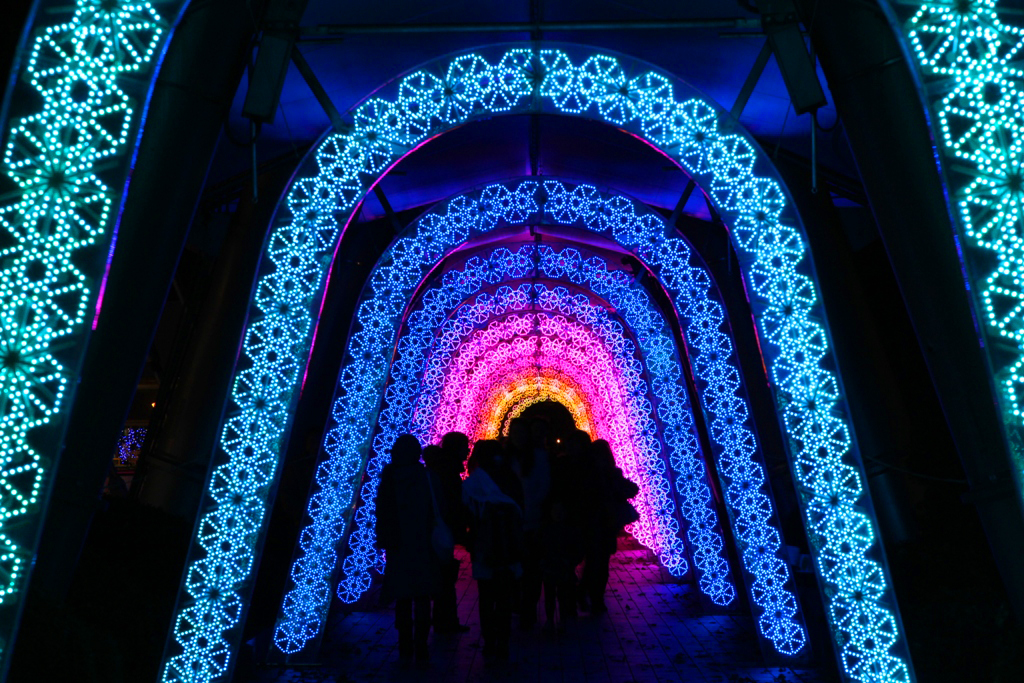japanese
Tokyo Dome Kourakuen Illumination 2011
Check out these amazing winter time images from Japan Two
See the full set of images at Japan Two’s site tell them Alternative Mindz sent ya
Japanese Christmas Cake
Ingredients For sponge cake:
1/3 cup all purpose flour 1/3 cup sugar 1/4 tsp baking powder 3 eggs 1 1/2 tbsp butter For whipping cream: 2 cups heavy cream
4 tbsps sugar Garnish: 16 pieces whole strawberry
Directions
Spread some butter inside of an 8-inch round cake pan. Put eggs and sugar in a bowl and whisk very well.
Place the bowl over hot water in another large bowl and whisk further. When the egg mixture becomes white, shift flour and baking powder together and add to the bowl. Add melted butter in the bowl and mix gently.
Preheat the oven to 350F.
Pour the batter in the pan and bake in the preheated oven for 25-35 min.
Remove the cake from the pan and cool it on a rack.
Cut the cake in half horizontally.
Mix heavy cream and sugar in a bowl.
Whip the cream well.
Slice 8 pieces of strawberries into thin pieces.
Take the half of the whipped cream and mix the sliced strawberries.
Place the cream on top of a round cake slice.
Place another cake slice on top of the cream.
Spread the rest of the whipped cream on top and around the cake.
Decorate the cake with 8 pieces of strawberries.
Japan the Otaku show:Christmas cakes
Japan the Otaku show:Christmas = kentucky
K-ON! The Movie – Official Trailer (映画「けいおん!」予告)
Keio University demonstrate Touchable 3D Character
Keio University demonstrate Touchable 3D Character Projected Into a Real Environment
RePro3D, developed by a research group at Keio University, is a multi-perspective, naked eye 3D display in which viewers can touch a 3D character floating in midair.
The touchable 3D display is a combination of three elements. A mechanically-controlled model environment, a tactile interface and a glasses-free 3D integral imaging display.
“We use retro-reflective projection technology, using materials with special retro-reflective characteristics. This kind of material reflects light that enters back at the same angle it entered. Using this technology enables a display to show images at a different place from the light source.”
The input interface uses an infrared camera to recognize the movements of the user’s hand, and the character on screen reacts to the movements instantly. They are currently developing a system which can replicate the sensation of directly touching the image by having the user wear a tactile feedback device on their finger.
“There are many attractive characters in animations and games, but since those characters only exist within the screen, it feels a little lonely, and so we built this image display because we wanted to bring those characters into our real-world 3D space to play.”
Using past methods to display 3D images, it was hard to perfectly match the positions and images users were touching on the 3D display. But with this technology, it feels like you are touching the exact spot as you see it. In the future, they plan to build a touchable 3D display system that expands the size of the visible image, so that multiple people can be in the same space, and can share the same image.
Hanafubuki’s Daruma Temple
Daruma Temple – A visit to the roots of Japanese cinema / だるま寺 ~映画人の魂を訪ねて



